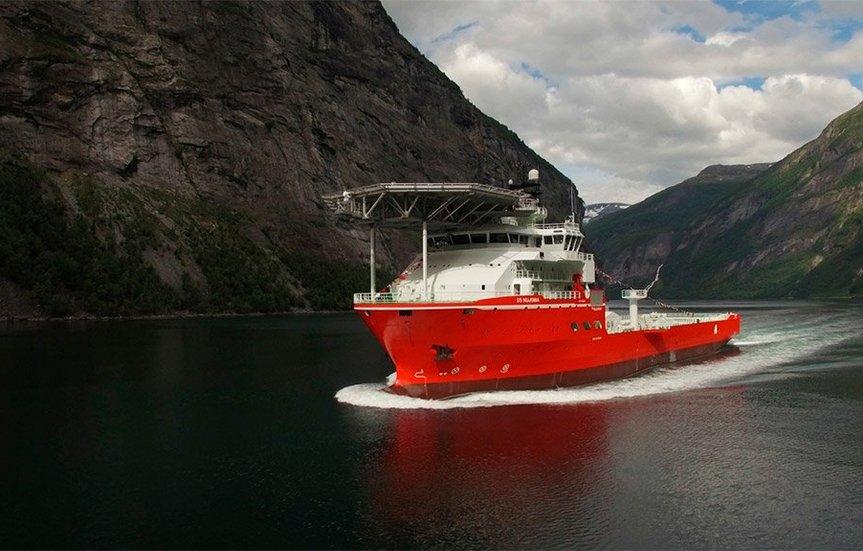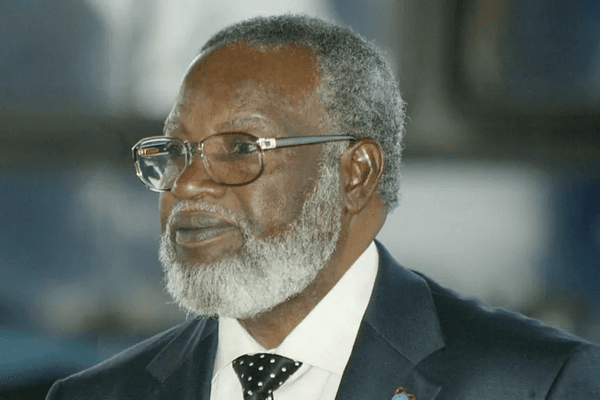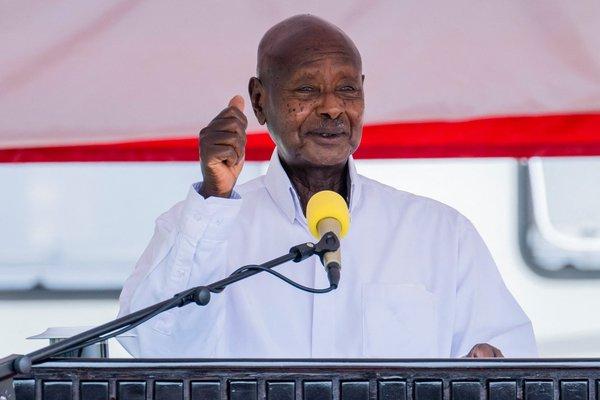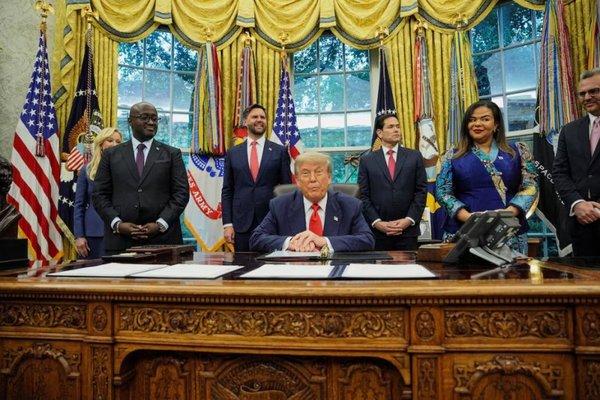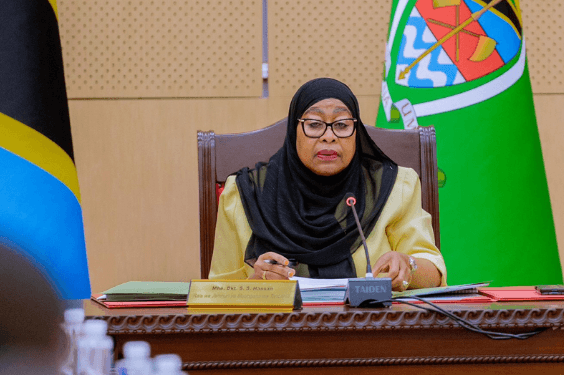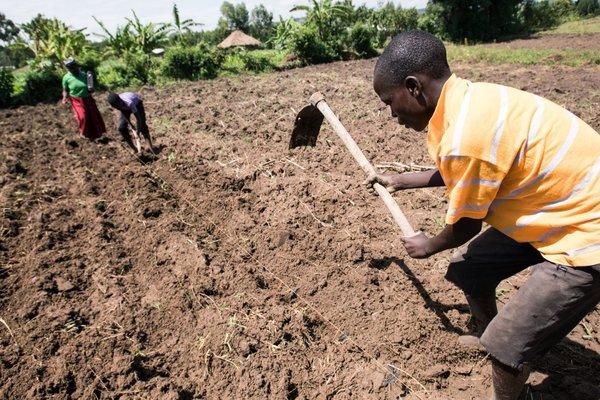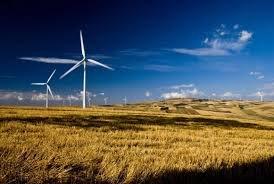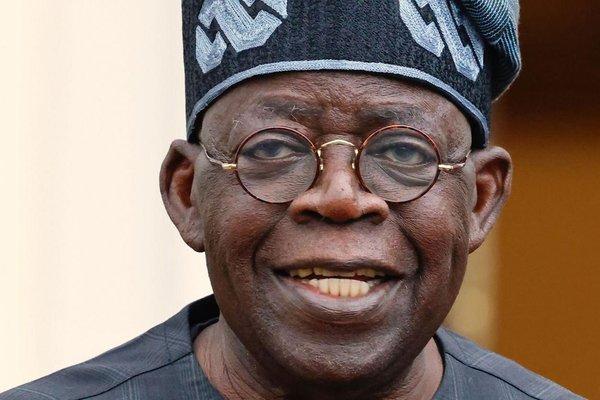Namibia
Namibia is a sparsely populated country in southwestern Africa, known for its vast deserts, unique wildlife, and dramatic landscapes. It gained independence from South Africa in 1990 and has since been a stable democracy. Its name is derived from the Namib Desert, one of the oldest deserts in the world.

Southwestern Africa,

Approx. 825,615 sq km

UTC +2 hours

About 2.6 million people (as of 2024)

English (official),Oshiwambo, Afrikaans, Herero, Damara, Nama, and German.

Christianity over 90% of the population, Islam

Namibian Dollar (NAD)

President (2024): Nangolo Mbumba

Brief
Namibia is a country located in southwestern Africa, known for its striking landscapes, vast deserts, and diverse wildlife. Bordered by Angola, Zambia, Botswana, South Africa, and the Atlantic Ocean, it boasts natural wonders like the Namib and Kalahari Deserts, the Skeleton Coast, and Etosha National Park. Namibia gained independence from South Africa in 1990 and is one of Africa's most politically stable nations. Its capital, Windhoek, serves as the economic and administrative center. Despite its sparse population, Namibia is rich in cultural diversity, natural resources, and tourism potential.
Cultural Life
Culltural milieu
Namibia’s cultural milieu is shaped by its diverse ethnic heritage, colonial history, and evolving modern identity. Home to over a dozen ethnic groups, including the Ovambo, Herero, Himba, Damara, Nama, and San (Bushmen), Namibia celebrates a rich mosaic of languages, customs, and traditions. Indigenous groups maintain traditional lifestyles—especially in rural areas—with unique dress, dance, and social structures.
The influence of German and South African colonial rule is visible in architecture, cuisine, and Christianity, which blends with African spiritual traditions. Languages such as Oshiwambo, Nama/Damara, Afrikaans, and German are widely spoken alongside English, the official language.
Cultural expressions through storytelling, music, beadwork, and ceremonies are central to Namibian life. Urban areas like Windhoek reflect a growing blend of African tradition and Western influence, while rural communities preserve age-old practices. Namibia's cultural identity is deeply tied to the land, community, and resilience, fostering a strong sense of heritage and national pride.
Daily Life and Social customs
Daily life in Namibia is shaped by its diverse cultures and vast natural landscapes. Many Namibians live in rural areas where traditional lifestyles prevail, including farming, herding, and community gatherings. In urban centers like Windhoek and Swakopmund, daily life is more modern with a mix of offices, schools, markets, and social activities. Family and community play a central role, with strong ties to cultural heritage expressed through music, dance, and festivals. Despite challenges such as limited access to some services in rural regions, Namibians value hospitality, resilience, and a close connection to their environment, often spending free time outdoors enjoying Namibia’s remarkable wildlife and scenery.
PHOTOS
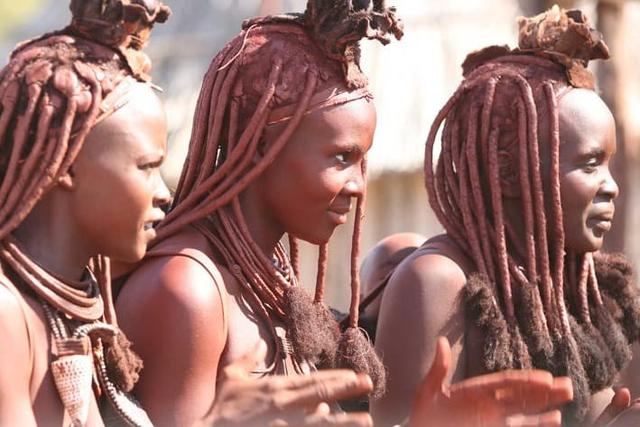
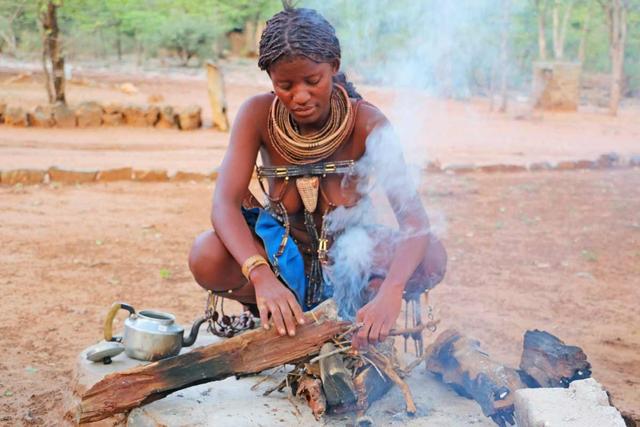


Cuisines
Namibian cuisine reflects the country’s rich cultural diversity and natural resources. Staple foods often include maize, millet, and sorghum, which are used to make traditional dishes like mahangu porridge and oshifima. Meat plays a central role, with popular options including beef, game meats such as oryx and kudu, and fish along the coastal areas. Barbecue, known locally as “braai,” is a beloved social tradition featuring grilled meats. Other common dishes include potjiekos (a slow-cooked stew), kapana (street-grilled meat), and omagungu (wild spinach). Influences from German and Afrikaans settlers can also be seen in pastries, sausages, and breads, blending Namibia’s indigenous flavors with European tastes.
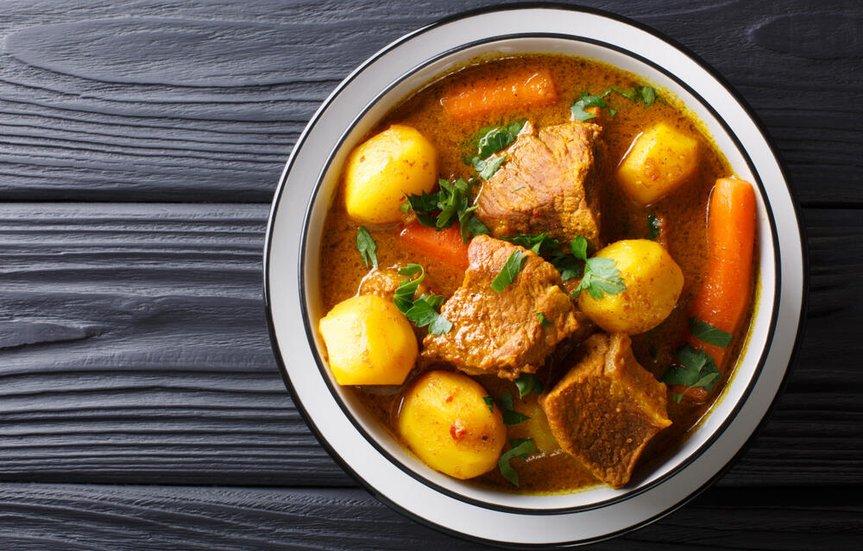
PHOTOS




Music
Namibian music is vibrant and deeply connected to the country’s diverse ethnic groups and cultural heritage. Traditional music often features rhythmic drumming, chanting, and the use of instruments like the xylophone, marimba, and handcrafted drums. Popular styles include Oshiwambo folk music, Herero gospel, and Damara percussion. In contemporary music, genres like kwaito, hip-hop, and Afro-pop have grown popular, especially among the youth in urban areas. Music is a key part of celebrations, rituals, and storytelling, helping to preserve history and strengthen community bonds across Namibia.

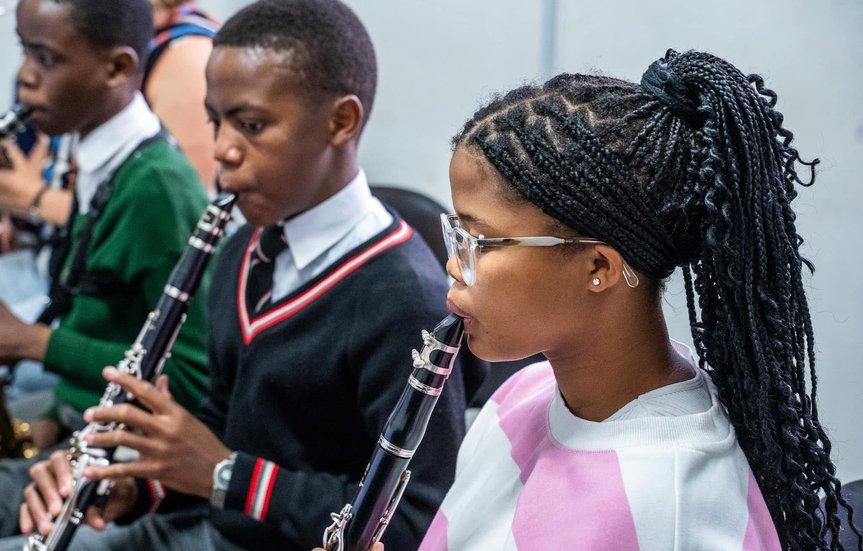
Arts
Namibian art is rich and diverse, deeply rooted in the country’s cultural traditions and natural environment. Traditional art forms include intricate wood carvings, pottery, and basket weaving, often created by different ethnic groups such as the Herero, Himba, and San people. These artworks commonly feature symbolic patterns and vibrant colors that reflect their heritage and daily life. Contemporary Namibian artists blend these traditional styles with modern techniques, producing paintings, sculptures, and mixed-media pieces that explore social themes and national identity. Art festivals and galleries in cities like Windhoek showcase this dynamic creativity, making Namibian art a vital expression of the country’s cultural pride and evolving story.
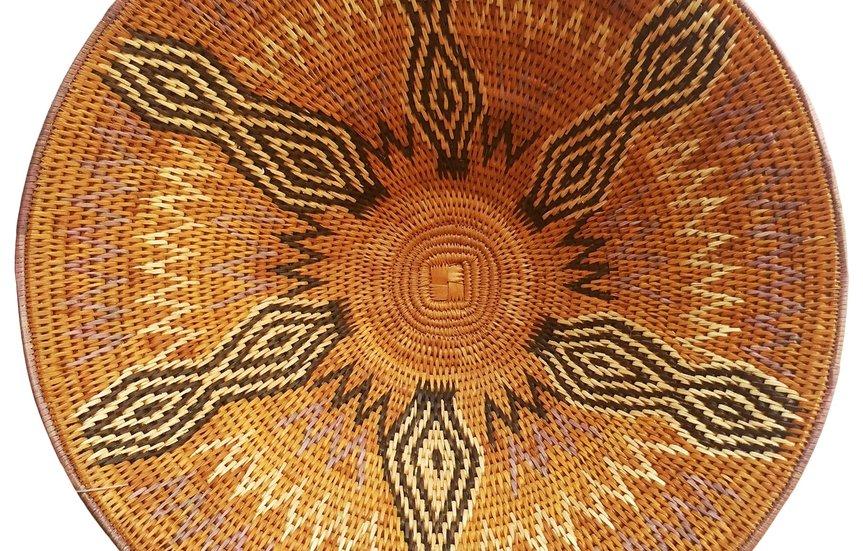




PEOPLE
Ethnic Groups
Namibia is home to a diverse mix of ethnic groups, each with its own language, culture, and traditions. The largest ethnic groups include the Oshiwambo-speaking people (comprising several subgroups like Ovambo), who make up nearly half the population. Other significant groups are the Herero, known for their distinctive Victorian-style dress, and the Damara, with their unique languages and customs. The Nama people, part of the Khoisan family, are famous for their click languages and pastoral lifestyle. The Himba, a semi-nomadic people in northern Namibia, are renowned for their red ochre body paint and traditional ways. Additionally, smaller groups like the San (Bushmen), one of the oldest indigenous peoples in Africa, preserve ancient hunter-gatherer traditions. This ethnic diversity enriches Namibia’s cultural landscape and social fabric.
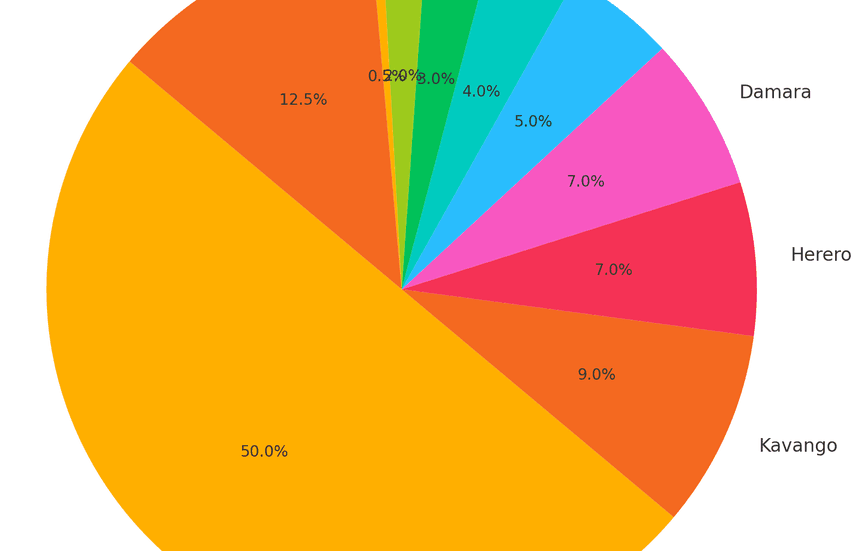




Religion
Religion in Namibia is predominantly Christian, with a majority of the population belonging to various Protestant denominations such as Lutheran, Anglican, and Methodist churches. Roman Catholicism also has a significant presence. Christianity was introduced through missionary work during the colonial era and remains deeply influential in Namibian society. Alongside Christianity, there are traditional African religious beliefs practiced by some communities, often blending ancestral worship and spiritual customs with Christian faith. Small minorities of Muslims, Hindus, and other faiths exist mainly in urban areas, reflecting Namibia’s multicultural makeup. Overall, religion plays an important role in community life, celebrations, and social values.
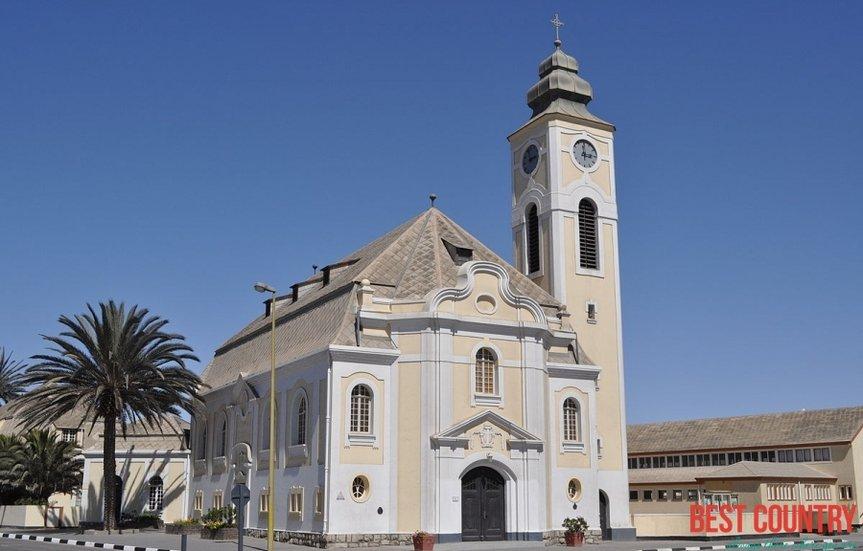
Settlement Patterns
Namibia’s settlement patterns are shaped by its vast, arid landscapes and historical development. The majority of the population lives in rural areas, often in small villages or dispersed homesteads, especially in the northern regions where subsistence farming and pastoralism dominate. Urbanization is growing, with significant population concentrations in cities like Windhoek, Walvis Bay, and Swakopmund, which serve as economic and administrative hubs. Settlements tend to cluster near water sources and arable land due to the country’s dry climate. Traditional communal living is common in rural areas, while urban areas show more modern housing and infrastructure. This mix of rural and urban settlement reflects Namibia’s ongoing social and economic transition.

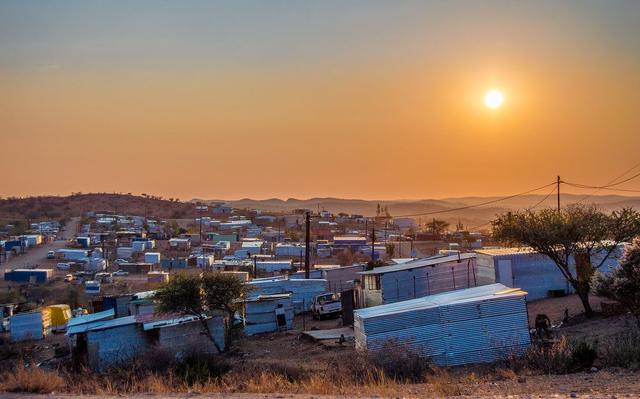
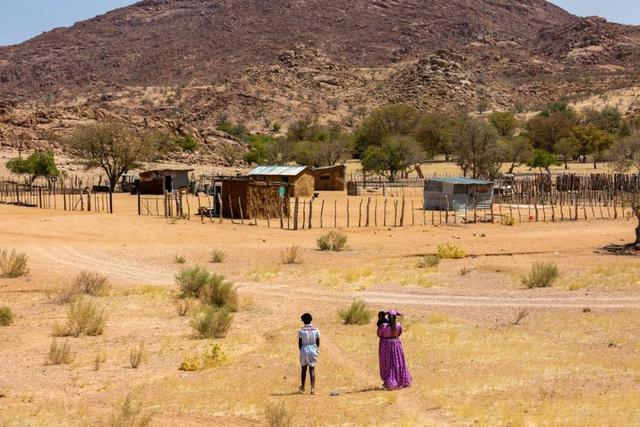
Demographic Trends
Namibia has a youthful and growing population of about 3 million, with nearly 37% under age 14 and a median age of around 21. Urbanization is increasing rapidly, with nearly half the population now living in cities like Windhoek and Walvis Bay, and this is expected to rise further. However, the country faces high unemployment rates, especially among youth, with over 36% unemployed. To address these challenges, the government is focusing on economic diversification and initiatives to create jobs, aiming to turn its young population into a valuable workforce for the future.
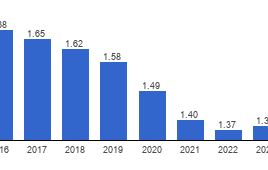
Touristic Cities
Windhoek City
Windhoek, the capital and largest city of Namibia, is the political, economic, and cultural heart of the country. Nestled in a valley surrounded by hills, it blends modern urban development with rich colonial and indigenous heritage. The city is home to government offices, major businesses, universities, and cultural institutions. Windhoek’s population is diverse, reflecting Namibia’s many ethnic groups, and it serves as a hub for commerce, education, and tourism. Despite its growth and modernization, Windhoek maintains a relaxed atmosphere with markets, parks, and historic sites, making it a vibrant and welcoming city.

Besides Windhoek, Namibia has several important cities that contribute to its economy and culture. Swakopmund, located on the Atlantic coast, is a popular tourist destination known for its German colonial architecture, beaches, and adventure sports like sandboarding and skydiving. Walvis Bay, also on the coast, is Namibia’s main port and an economic hub for shipping and fishing industries. Oshakati is the largest town in the northern region and a commercial center for surrounding rural areas. Rundu, near the Angolan border, is a key town for trade and cultural exchange with neighboring countries. Each city reflects Namibia’s blend of tradition and modernity while serving different regional roles.




Accommodations
Guesthouses
Guesthouses in Namibia are a popular accommodation choice, especially in cities like Windhoek, Swakopmund, and Lüderitz. These establishments offer a homely atmosphere with personalized service, often operated by local families or small businesses. They typically feature well-furnished rooms, home-cooked meals, and cozy communal areas. Guesthouses appeal to travelers seeking comfort, affordability, and a more authentic experience. Many also assist with arranging local tours and transportation, making them ideal for tourists exploring the country.
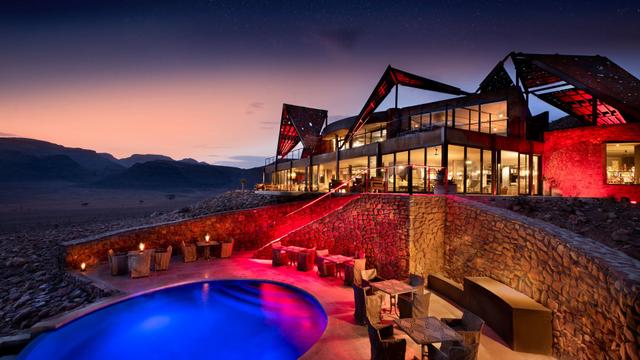
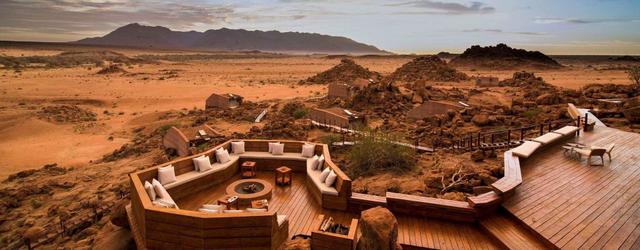

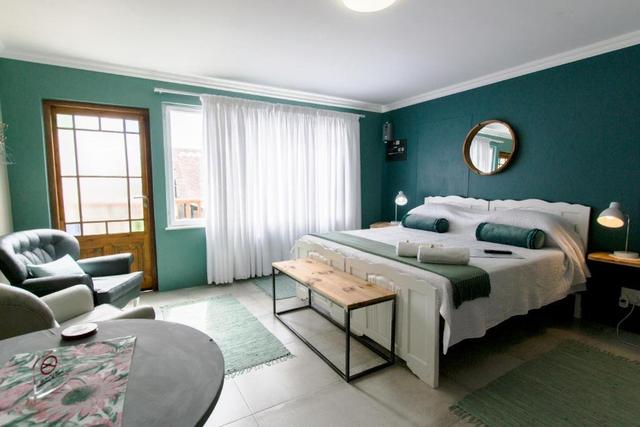
Hotels and Resorts
Namibia boasts a wide range of hotels, from luxury lodges to budget-friendly city hotels. In the capital, Windhoek, international-standard hotels like Avani Windhoek and Hilton Windhoek cater to business travelers and tourists with top-tier amenities such as conference facilities, pools, gyms, and fine dining. Coastal towns like Swakopmund and Walvis Bay also have excellent hotel options, often near beaches or tourist attractions. In more remote areas, smaller hotels and lodges offer basic comforts and are often located near national parks or safari routes.
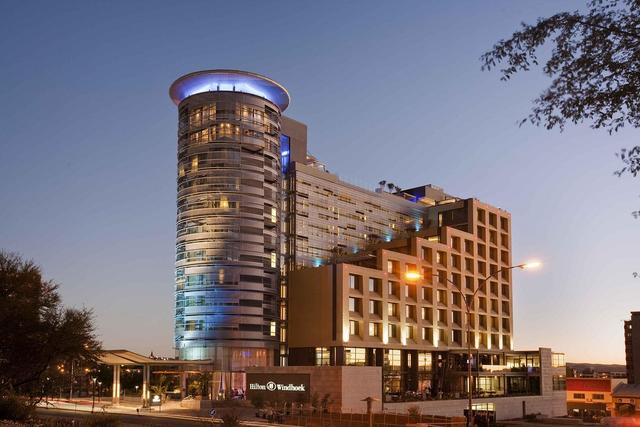


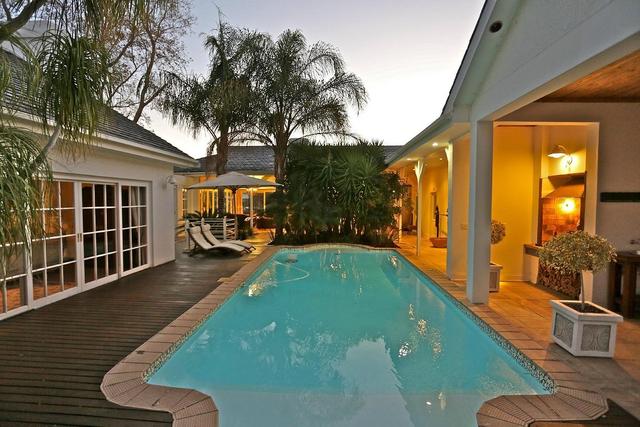
Raids
Traditional raids or riads, known for their inner courtyards and intricate Moroccan-style architecture, are not native to Namibia and are generally not found there. However, some boutique lodges and guesthouses incorporate African and colonial-style design features such as shaded verandas, thatched roofs, and open courtyards. These accommodations are designed to blend with the natural surroundings and offer a serene, aesthetic experience, particularly in desert regions or wildlife conservancies.




Campings
Camping is one of the best ways to experience Namibia’s breathtaking landscapes, and the country is well-equipped with organized campsites. Whether in Etosha National Park, the Namib Desert, or along the Skeleton Coast, campers can find designated sites with essential facilities like toilets, showers, barbecue areas, and sometimes small shops or reception areas. For the more adventurous, wild camping is possible in remote regions with proper preparation. Many campsites are part of larger lodges or conservancies, offering both budget and luxury camping options, including glamping.
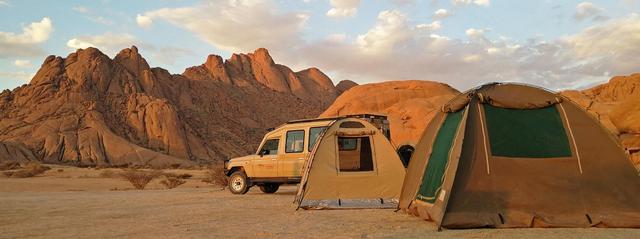
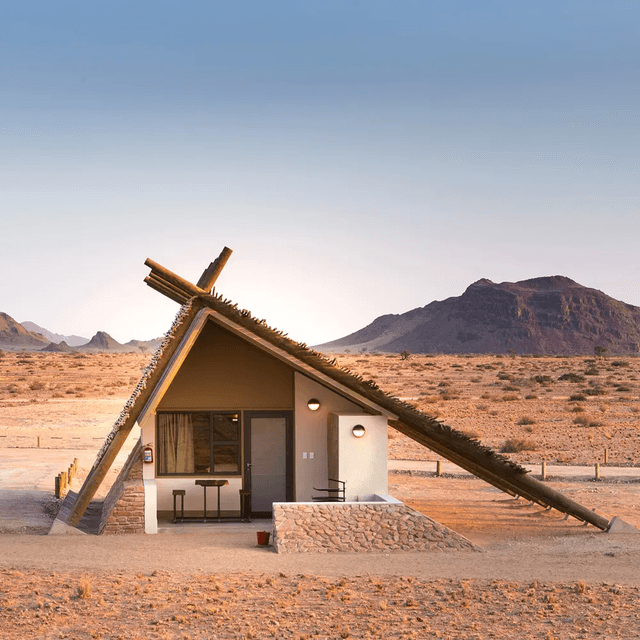


Requirement for visa
Documents needed when applying for a visa
Required Documents
Mandatory for All Applicants:
- Valid passport with at least 6 months' validity remaining and minimum 3 blank pages.
- Completed visa application form — online form to print and sign if applying via e‑Visa.
- Passport‑style photographs (typically two) — in colour, plain background.
- Return or onward flight ticket.
- Proof of accommodation (hotel reservation or host invitation letter )
- Travel and medical insurance, valid for the period of stay.
- Proof of sufficient funds (bank statement for at least 3–6 months, or confirmation of funds).
If Travelling with Children:
- Full birth certificate or a parental consent letter if only one parent is traveling. Authentication — e.g. notarized — is sometimes required.
Additional (occasionally requested):
- Motivation letter, especially if applying via embassy or for a holiday/business visa. Must be signed and addressed appropriately.
- Certified copies of passport bio pages and other documents (if specified by the consulate).
- Yellow fever certificate only if you have recently traveled through endemic countries.
Economy of Namibia
Agriculture sector
Agriculture in Namibia is a vital sector, though it faces challenges due to the country’s arid climate and limited rainfall. Livestock farming—especially cattle, sheep, goats, and donkeys—is the dominant form of agriculture, practiced mainly in communal and commercial farms. Crop farming is less widespread but includes millet, maize, sorghum, and beans, mostly grown in the northern regions where rainfall is higher. Due to frequent droughts, many farmers rely on extensive grazing and adapt with drought-resistant crops. Irrigation schemes and government programs aim to improve food security and support small-scale farmers. Overall, agriculture remains crucial for rural livelihoods and Namibia’s economy.
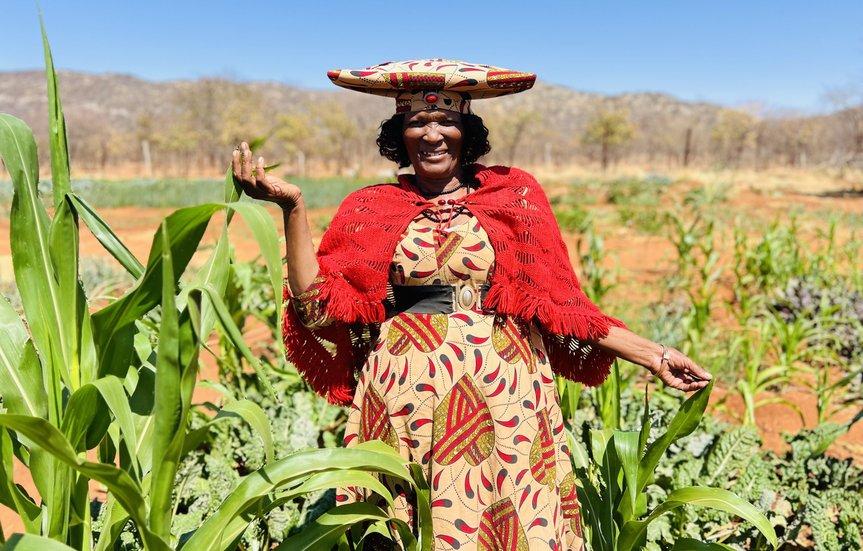
Fishing
Fishing is a cornerstone of Namibia’s economy, particularly along the nutrient-rich Benguela Current off the Atlantic coast, which supports one of the most productive marine ecosystems in the world. The industry is a major source of employment and foreign exchange, with key species including hake, horse mackerel, pilchards, monkfish, and tuna. Namibia has developed a well-regulated fisheries sector, emphasizing sustainability through quotas, monitoring, and enforcement mechanisms. The government grants fishing rights to local operators to promote domestic value addition, including onshore processing and packaging for export to Europe and Asia. Despite its success, the sector faces challenges such as illegal fishing, overexploitation of some species, and the need to balance economic growth with environmental conservation. Nevertheless, fishing remains a vital sector for Namibia’s socio-economic development and food security.
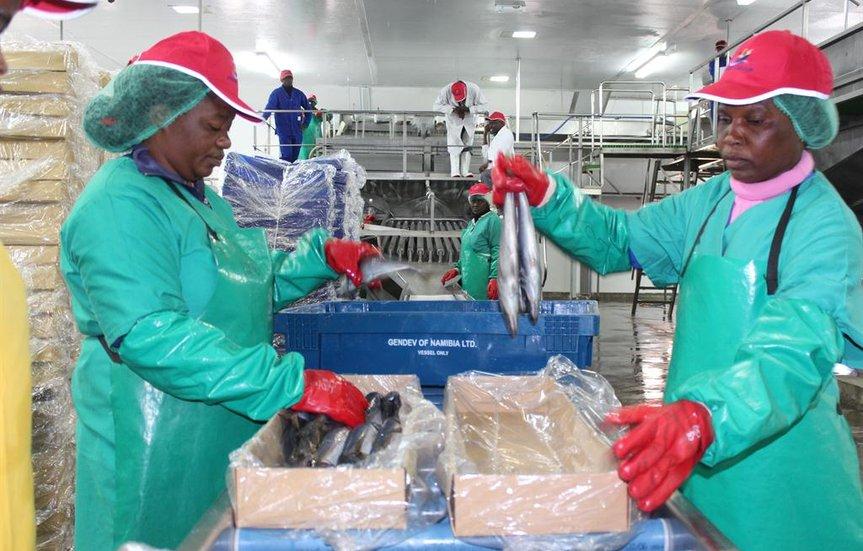
Oil Production
Namibia is on the verge of becoming a major oil producer following several significant offshore discoveries in recent years. Key finds by Shell, TotalEnergies, and Galp Energia in the Orange Basin—such as the Graff, Venus, and Mopane fields—have revealed vast reserves, with estimates suggesting up to 11 billion barrels of oil and over 2 trillion cubic feet of gas. Although the country has not yet commenced commercial production, first oil is expected around 2029–2030, with output potentially reaching 500,000 barrels per day by the mid-2030s. These developments could transform Namibia’s economy, positioning it among Africa’s top oil producers. The government has taken strategic steps to manage this emerging sector, including placing oil and gas oversight under the Office of the President to streamline regulation and ensure national benefit. With growing international interest and continued exploration, Namibia's oil industry holds immense promise for long-term economic growth and energy security.

Industry
Industry in Namibia is a growing but still relatively small sector, contributing around 20% to the country’s GDP. The industrial base is diverse, including mining-related processing such as uranium and diamond cutting, food and beverage production, manufacturing of basic consumer goods, construction materials, and textiles. Mining remains the backbone of the economy, and much of the industrial activity supports this sector through beneficiation and value addition. The government has prioritized industrial development through initiatives like the Harambee Prosperity Plan and various special economic zones to attract investment, enhance manufacturing capacity, and diversify the economy beyond mining. Challenges remain, including limited infrastructure, skills shortages, and dependence on imported inputs, but ongoing reforms and investments aim to boost competitiveness and job creation in the industrial sector.
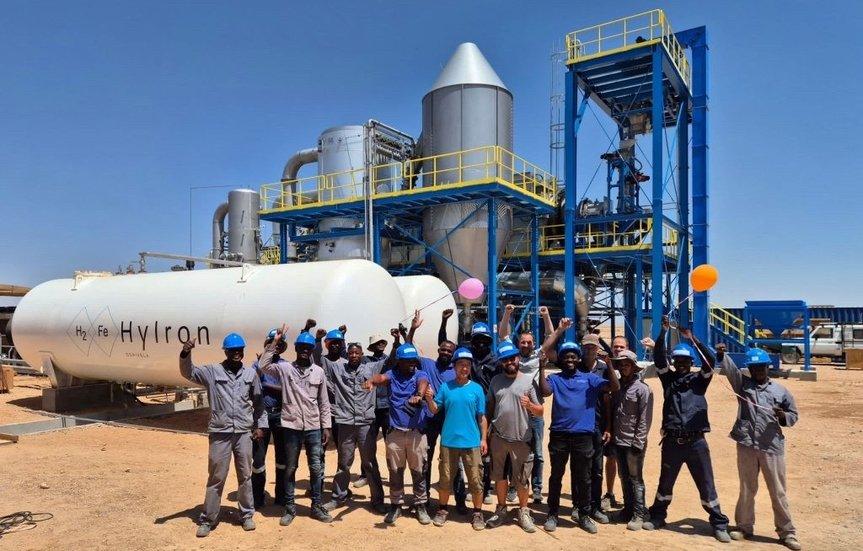
Transportation and Telecommunication
Namibia has a well-developed transportation network featuring major paved roads like the B1 highway that connect key cities and borders, a railway system managed by TransNamib linking important regions, and several airports including the main international hub, Hosea Kutako. While public transport in cities is limited, initiatives like Windhoek’s modern bus system aim to improve urban mobility. In telecommunications, the sector is dominated by state-owned companies MTC and Telecom Namibia, providing widespread 4G coverage and expanding broadband access. Investments in digital infrastructure, such as new base stations and submarine cables, are enhancing internet connectivity across the country, supporting Namibia’s economic growth and social development.






